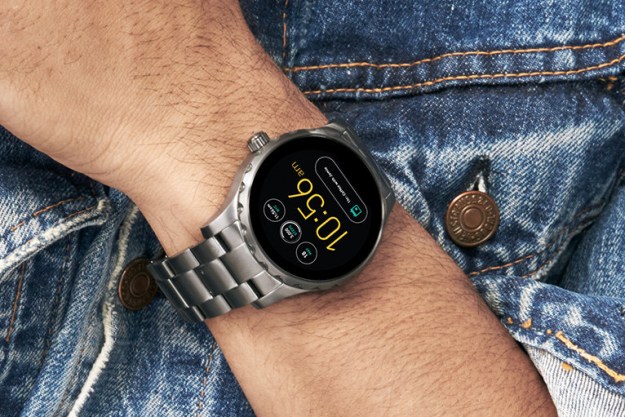If you’ve got an Apple Watch or a Fitbit, you’ve already sampled the world of wearables. But a new development could allow wearables to become much more than wristwatches or heart monitors. A team of scientists has developed a stretchable, self-healing, recyclable wearable which could be the future of the format.
The team, consisting of researchers from both China and the U.S., has developed a new wearable that acts like real skin, allowing it to stretch as you move and to heal itself if it suffers minor damage. The wearable can be used for tasks like measuring body temperature or counting daily steps, and the teams says it could be used for health monitoring as well as being the next step for human-computer interfaces and virtual reality experiences.
The configurability of the technology means it can be adapted to all sorts of needs. “If you want to wear this like a watch, you can put it around your wrist,” said senior co-author Dr. Jianliang Xiao, a researcher in the Department of Mechanical Engineering at the University of Colorado, Boulder. “If you want to wear this like a necklace, you can put it on your neck.”

This means it is more adaptive than currently available wearables. “Smartwatches are functionally nice, but they’re always a big chunk of metal on a band,” said senior co-author Dr. Wei Zhang, a researcher in the Department of Chemistry at the University of Colorado Boulder. “If we want a truly wearable device, ideally it will be a thin film that can comfortably fit onto your body.”
The flexible wearable was created by using screen printing to form a circuit of liquid metal wires, which were then pressed between flexible films of polyamide. The result is about the thickness of a Band-Aid and can be stuck to the skin where it will flex and bend as the body moves without disrupting its function.
And it can heal too. “If you slice a patch of electronic skin, all you have to do is pinch the broken areas together,” Dr. Zhang said.
The aim is not only to create a new kind of wearable but also to reduce electronics waste. “Our solution to electronic waste is to start with how we make the device, not from the endpoint, or when it’s already been thrown away. We want a device that is easy to recycle,” Dr. Xiao said.
The work is published in the journal Science Advances.
Editors' Recommendations
- This stretchy, recyclable device turns the human body into a battery
- Your next therapy dog could be a biomimetic robot
- One of these women could be the first to step on the moon
- Scientists find new way to ‘upcycle’ plastic into valuable liquid
- Watch America’s first firefighting robot in action





